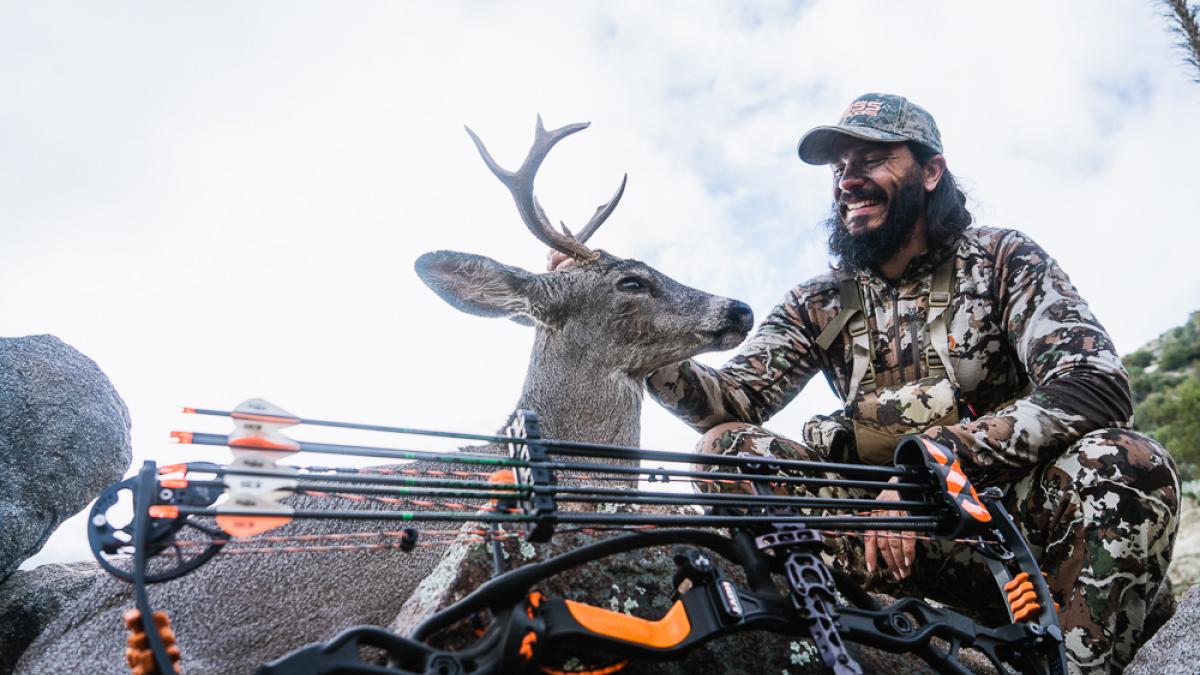
Bow Hunting Coues Deer-A How to Guide
By Josh Kirchner
Growing up I remember watching old hunting videos with my dad in our camper. We’d do this to pass the time on our deer hunts. Those cold mornings and nights spent in our camper are moments that I’ll remember forever.
Looking back, little things stick out to me, like the time I tried hot coffee for the first time. I don’t remember if I liked it more because of the taste or simply because it just warmed me up. Those hunting videos we’d watch while sipping coffee would inspire us for the coming day. Most of these hunts were filmed in a treestand and ended with a giant whitetail buck at the end of a blood trail. Seeing these works of art at the time, had me day dreaming often while out there. They also left me scratching my head. Things were just different out here in Arizona. There weren’t a lot of trees to put up treestands and our days weren’t ending with a giant whitetail buck at the end of a blood trail. No, we were spot-and-stalk hunting the high desert of Arizona and it wasn’t until later in life that I really grasped how to hunt it with a bow.
Increase Your Effective Range
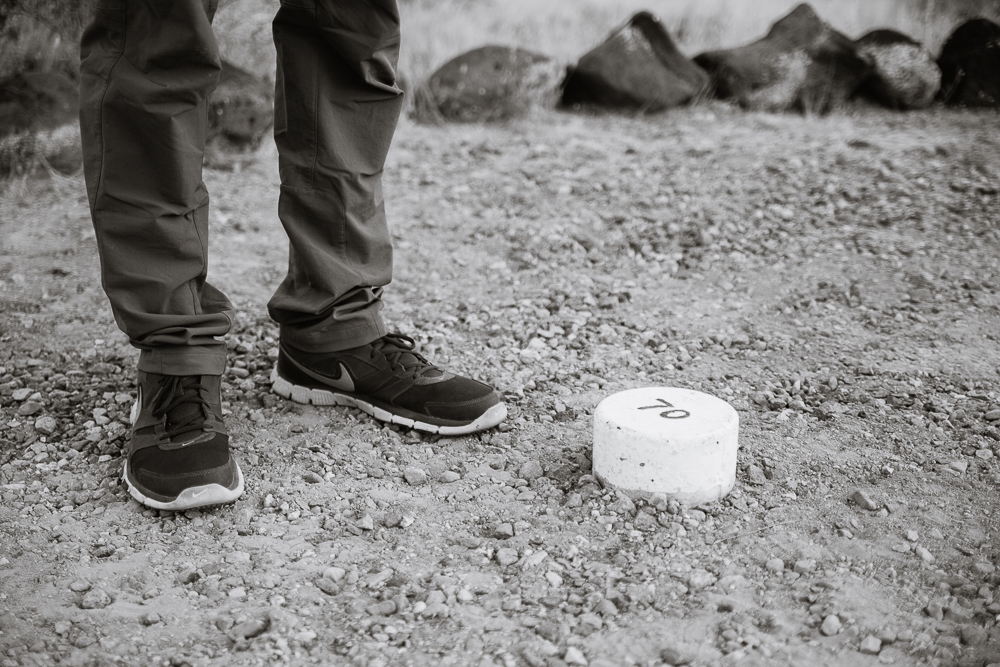
First things is first. If you want to come out and try your hand at spot-and-stalk archery hunting in the desert, you are absolutely going to have to increase your effective range if you want to up your odds of success. In those old videos I mentioned above, many of the deer are shot at 20 yards or less. They are also hunting in pretty dense country and in a treestand. Down here in the desert, things are much more wide open and instead of waiting for the deer to come to you, you are bringing the party to the deer. This poses some difficulties with getting close, because let’s face it, we aren’t as skilled of hunters as mountain lions are. For that reason, I think it is important to be proficient with your bow out to at least 60 yards. If I am being honest, though, us desert dwellers are flinging arrows at targets regularly out to 120 yards in preparation for the season. I know that might sound excessive, but you need to understand that this is just a different world than the whitetail woods. Practicing at that distance is going to make 60-70 yards feel like a chip shot.
Open Country
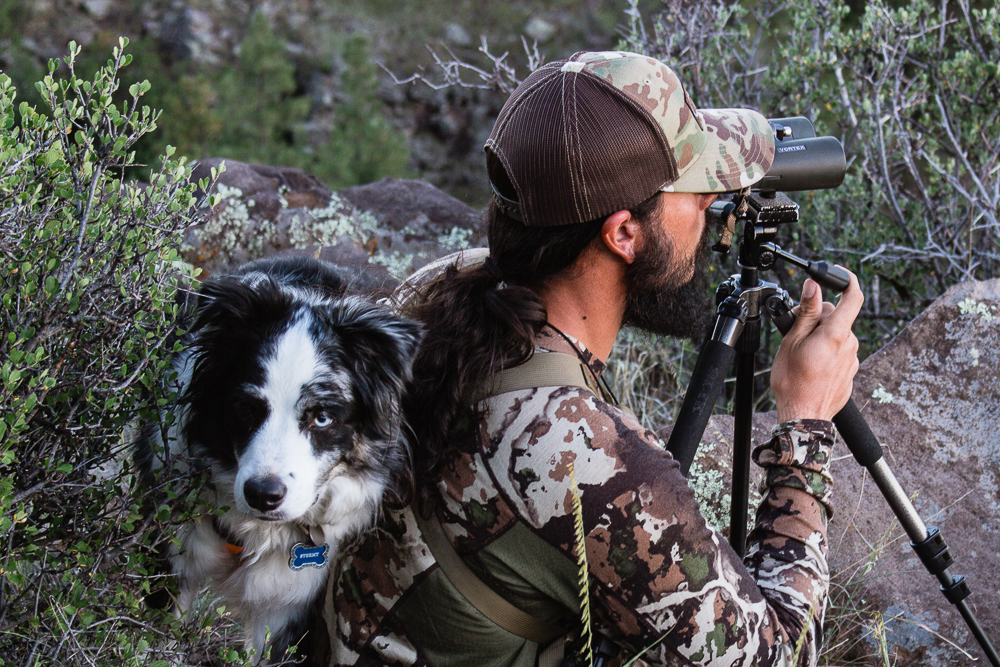
Like I said, this is a different world than the whitetail woods. The country is vast and even overwhelming at times. There are so many little nooks and crannies that an animal can hide in. The thought of having to cover every inch of this country on foot is just not realistic for most people or practical in general. In the desert, we like to set up high on a vantage point and let the glass do the walking for us. What do I mean by that? Well, we live and die by our optics in this vast country we call home. Having a good set of binoculars or spotting scope mounted to a tripod is going to save you a ton of boot leather. By staying back and surveying country from afar you are not only saving energy, but you are able to watch animals be animals. Watching a deer from far away that doesn’t know you are there is far greater an advantage than watching one from a closer distance that does. You are truly able to spot, come up with a plan of attack, and stalk by doing this.
Using Terrain to Your Advantage
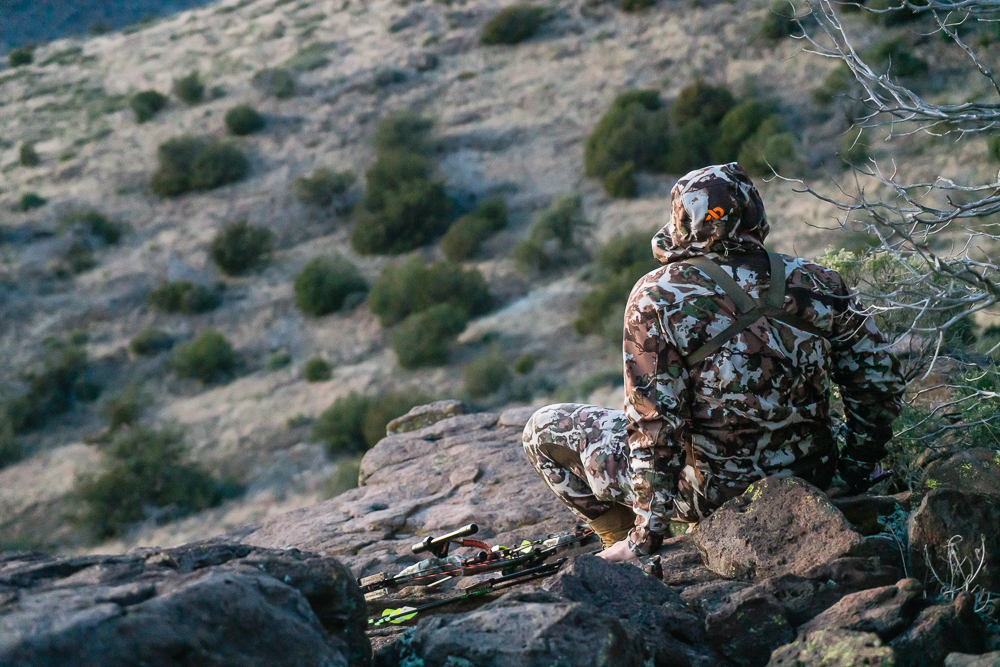
As you're sitting back and watching these animals go about their day, you should start to think about how you might close the distance, should you decide to do so. I like doing this no matter if I plan on stalking something or not. It keeps me thinking and is great practice for coming up with routes to cover country unseen. That is the golden ticket right there, staying unseen, along with wind direction of course. They don’t have to see you to smell you. Always have that in the back of your head. Besides that, though, using terrain to your advantage to shorten the gap between you two is huge. Take note of little things like draws, brush lines, big boulders, or anything that can obscure you from an animal’s line of sight. Many times I have used small draws to cut the distance by 3/4 of the way and not be seen at all. I like approaching stalks like this, because it lets me move fast. If they can’t see you, then why not right? I’m the type of person that sees an animal and says to myself, “why am I not there right now?” Of course be mindful of how much noise you are making. I’ve straight up jogged to cut distance down though. Moving along or behind brush lines is also a great way to get close. This crushes your outline and doesn’t make you stick out as much. Another thing you can do is put something in between you and the animal on the approach. Say a large boulder or tree even. By keeping the animal on the other side of that rock out of view, it can’t see you inching closer. The overall concept here is to pick and plan a route for your stalk. You’ll be happy that you did instead of trying to wing it.
Which Animal to Go After and When?

You’re up on a vantage point behind your optics and you’ve got a group of nice bucks spotted. The question now is which animal should you go after and, better yet, when should you go after it? For some, the “which” is going to come down to antler size, and for others it’s just going to be whichever buck gives them the opportunity. Either is totally fine. For the big buck killers out there, all of the focus is going to be put on the biggest deer in the group. Your actions will be a reflection on what that deer does, where it goes, and where it is in relation to the other fellas in the herd. I am more of an opportunistic hunter, and better yet, an experience hunter. If there is a giant in a spot that just isn’t approachable, but there is a medium sized buck in a spot that will yield an epic stalk and overall experience, I’m taking the epic route. That’s just me.
To Bed or To Cut Off?
Now, the “when.” Something that I struggled with in my early years was when to actually make a move on an animal for a stalk. Much of the reading that I did kept harping on bedding stuff down. Makes sense right? The animal isn’t moving and you’ve got the time to get over there to try your luck at getting an arrow in him. So, for a while that’s all I tried to do. In this terrain out there though, you don’t always get the opportunity to bed animals down. This left me sitting behind my optics not going on stalks often. Then I talked to some experienced bowhunters in my area and they started telling me that they just go right after the animals on the spot. No waiting for them to bed. A more aggressive approach. Once I started trying this, I got more and more experience stalking animals. For a bowhunter, we need opportunity. If you are just sitting back enjoying the view, which is usually stunning, opportunities are flying right past you. Nowadays, how I approach this is very situational. If they bed, cool. If they are just feeding out on a bench or something, I’ll make a plan to get over to that bench. Stalking an animal that is feeding is great. Their attention is on their feed and they are making noise while moving around and chewing. When they are bedded, all they have to worry about is surviving. If they are traveling, I’ll make a plan to try and cut them off. A great “let them come to you” scenario. I think being able to adapt to all stalking situations out there is going to open up more opportunity for you as a bowhunter.
Noise
Something you might notice as you hike around the arid landscapes we speak of is how noisy it is. We don’t get a ton of rainfall in the desert, so most things are dry and crunchy. There are lots of loose rocks that just love blowing stalks for you as they grind together on an approach. Brush that is dead as a door nail can be almost deafening as it rubs on your pants. There are some ways to mitigate this though!
Lose the Boots
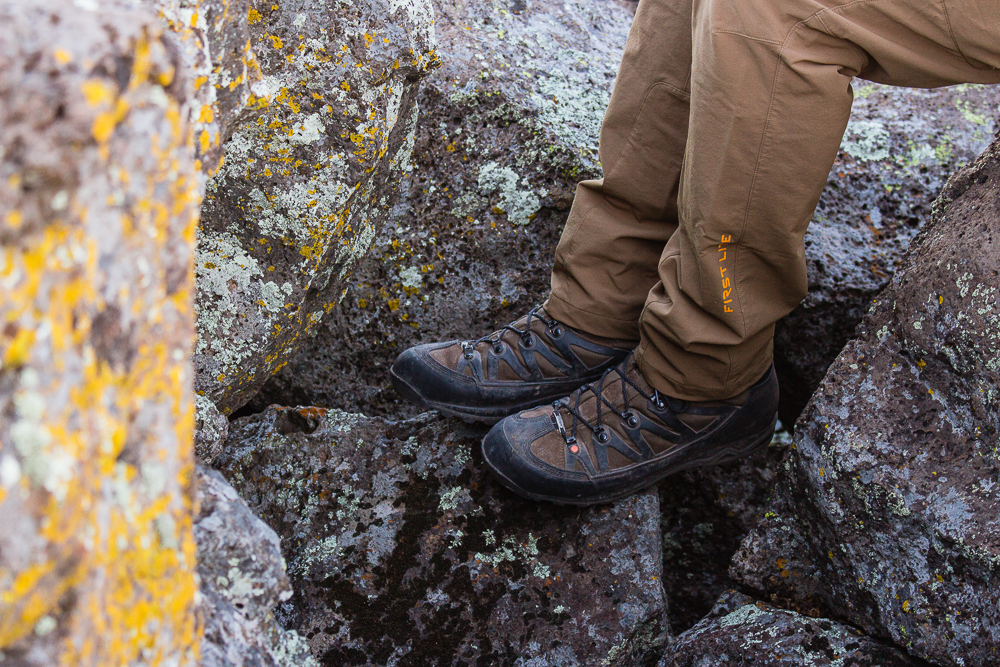
Yes, that does indeed say “Lose the Boots.” While I don’t mean that literally, I do mean drop them and your pack at a certain point in a stalk and go forth in your socks. I know that might sound crazy, but hear me out. When you step down with a boot, you are unable to feel what is beneath your feet, especially if you are wearing a harder sole boot. You won’t feel that stick that is about to snap or rock that is about to shift. This poses a problem when getting into bow range of an animal. You want to be as quiet as possible. Remember, this is their house and anything out of the ordinary, they are going to notice. This includes weird noises. I really like to do this when an animal is bedded, because like I said, all they have to worry about is surviving. Noise is extra crucial here. In my pack, I carry an extra pair of thick wool socks that I will slip on over my current socks. When I put them on, I’ll tuck my pant legs into them and that will help with both my pants rubbing together and with pants hitting brush. Now, when the animal is on the move, I don’t take off the boots. I’ve been on way too many wild goose chases, going farther than I thought with no boots in the desert. If you do drop your boots, make sure that you also drop a GPS waypoint on them. I’ve been there before, not knowing where I left my boots or pack. Not fun.
Keep an Eye on the Cacti
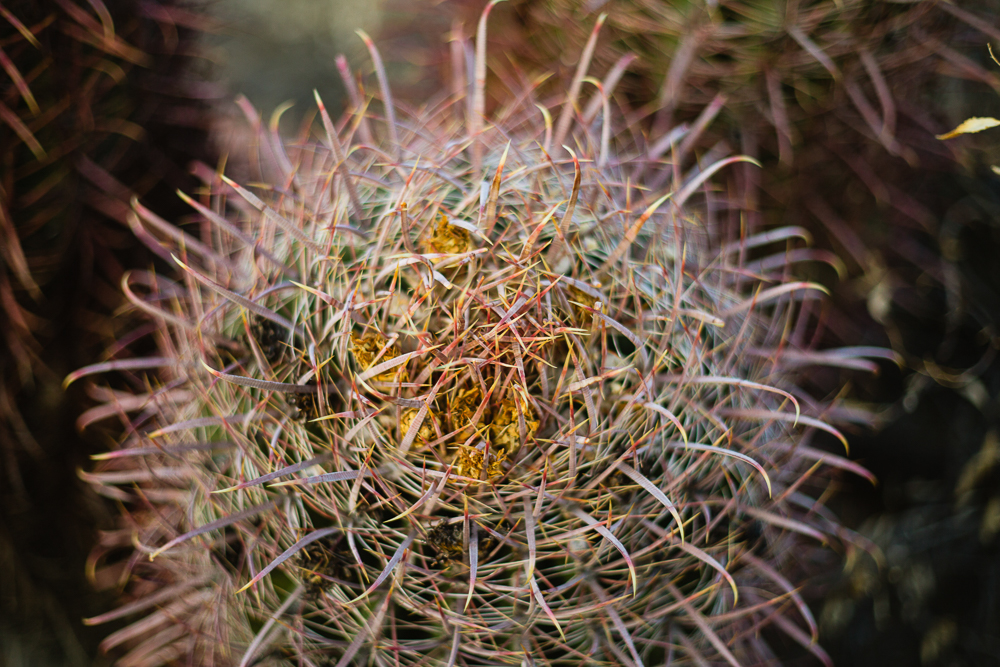
A small note here about all things pointy. If you take your boots off or find yourself crawling on your hands and knees, keep an eye on where you are putting those hands, knees, or feet. The desert is full of things that want to scratch and poke you. One time I was crab crawling my way through the snow to close the distance on a group of coues deer. Little did I know that I was crawling right through a dead prickly pear cactus. That was fun pulling all of the thorns out of my legs. Another time, I lost my pack and boots and found myself wandering around the desert looking for them. In doing so, I ended up stepping on a part of a jumping cactus in my socks. That was pretty awesome as well. Lessons learned.
You’re in Bow Range, Now What?
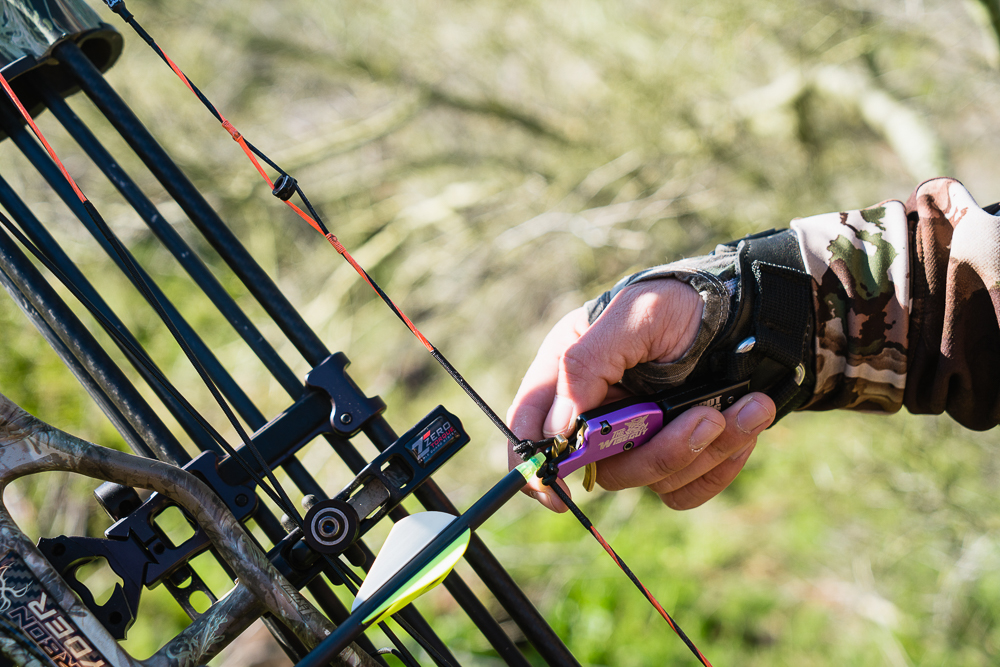
You’ve spotted your quarry, cut the distance, and are now in bow range of them. What do you do now? The short answer is pull your bow back and let it rip. However, there is a bit more to think about here. When you pull your bow back, you are moving. Many animals are super tuned into movement, so you need to do this at the right time. Waiting until an animal’s head is down to draw could save your bacon. Or when their head is behind vegetation to obscure their vision. Something to take note of is that an animal that knows you are there is way more likely to react to the sound of your bow going off as well. Coues deer are notorious for jumping the string. I’ve had Coues bucks not even be standing in the same place once my arrow got to them. But, they knew I was there. Be mindful of when you draw. All of that work will fly out the window if they catch you at the last second.
Should you find yourself “hung up” or waiting for the right opportunity to shoot, try to make sure that you are hung up in an area that offers cover for you. Maybe in some shadows, along a brush line, or in front of a tree. Just something to break up your outline so that you aren’t sticking out like a sore thumb to the animal you seek. Once you get in the red zone, everything matters.
Closing
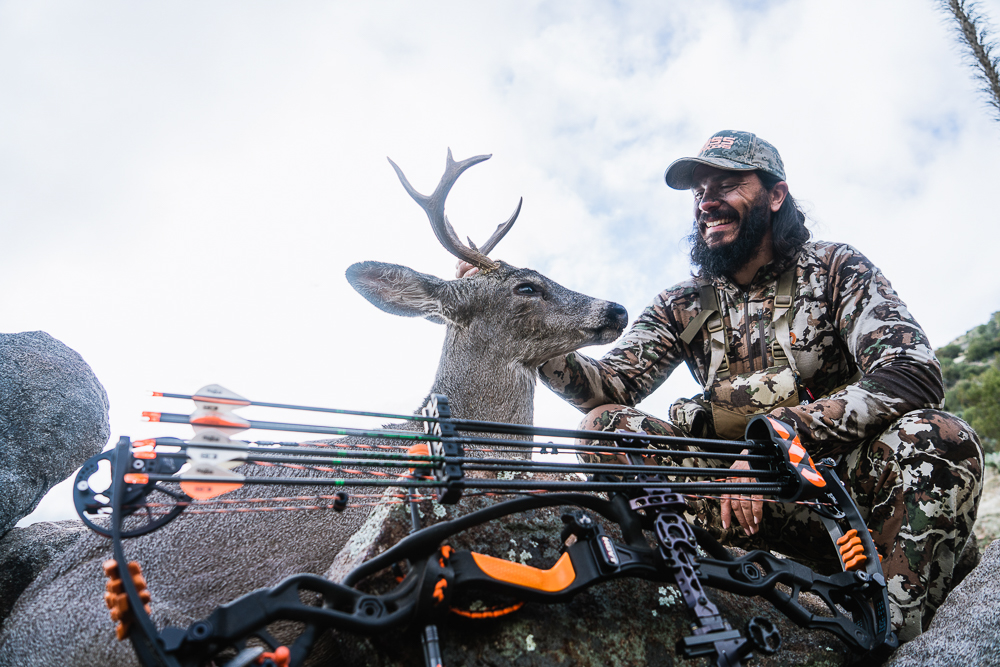
If you’re a bowhunter, then you are obviously a glutton for punishment and you enjoy a challenge. Taking your game to the desert will just build on that. Spot-and-stalk bowhunting in the desert is both incredibly frustrating and rewarding at the same time. It took me years before I ever sent an arrow through a desert critter. So many things can go wrong, and many of those things you won’t know until they’ve past. You will be humbled by doing so and you will become a better spot-and-stalk hunter by doing so. If you are looking to elevate your bowhunting game, then I’d highly recommend looking into some of these hunts to break up the monotony of what you might be used to. While the desert might look lifeless, I promise you it is teeming with life. You’ve just gotta be willing to look.
_______________________
Josh Kirchner is the voice behind Dialed in Hunter, a blog that not only documents his own journey, but provides gear reviews, tips/tactics for western hunting, and encourages other hunters to chase and achieve their goals. Josh is a passionate bowhunter that has been hunting with his family since he was a small boy, and for the last three years has been eating, sleeping, and breathing the hunting lifestyle. When he is not chasing elk, deer, bear, and javelina through the diverse Arizona terrain, he is spending time with his wife, two herding dogs, and mischievous cat.